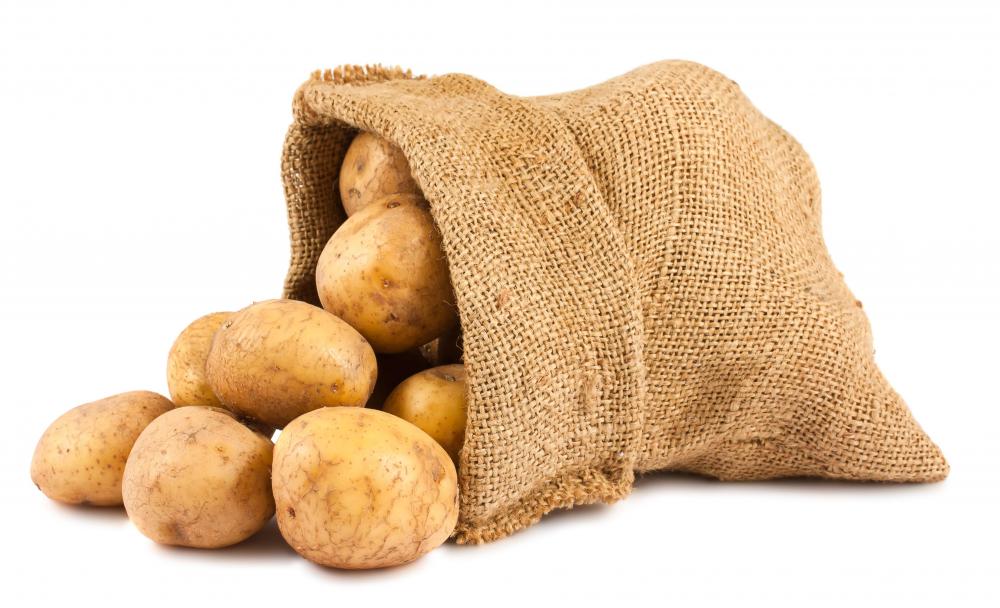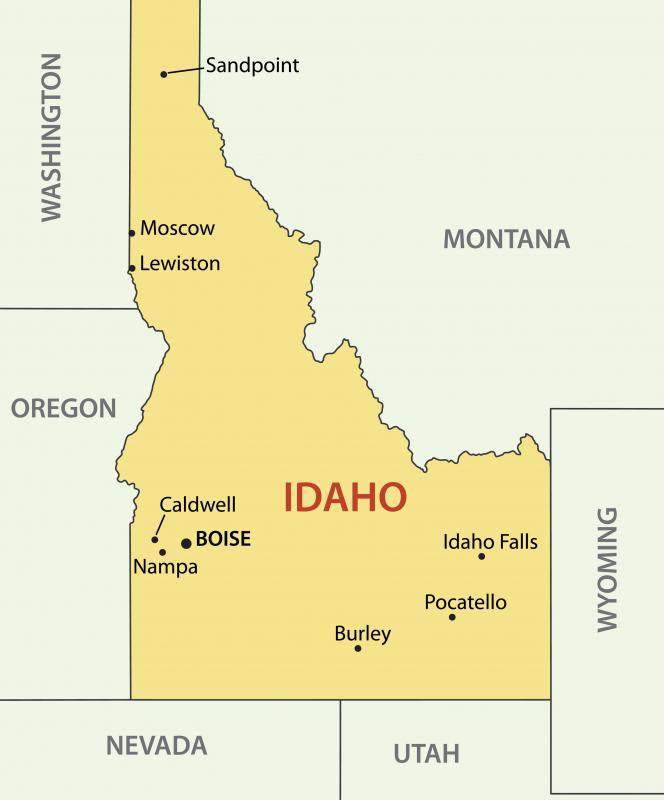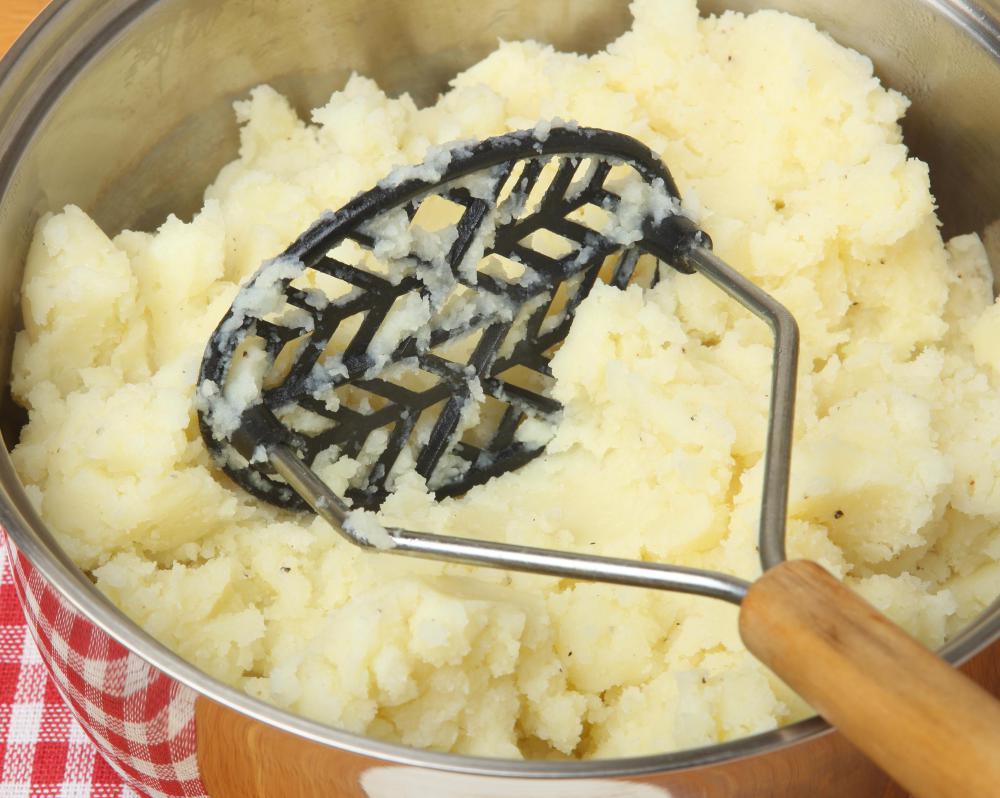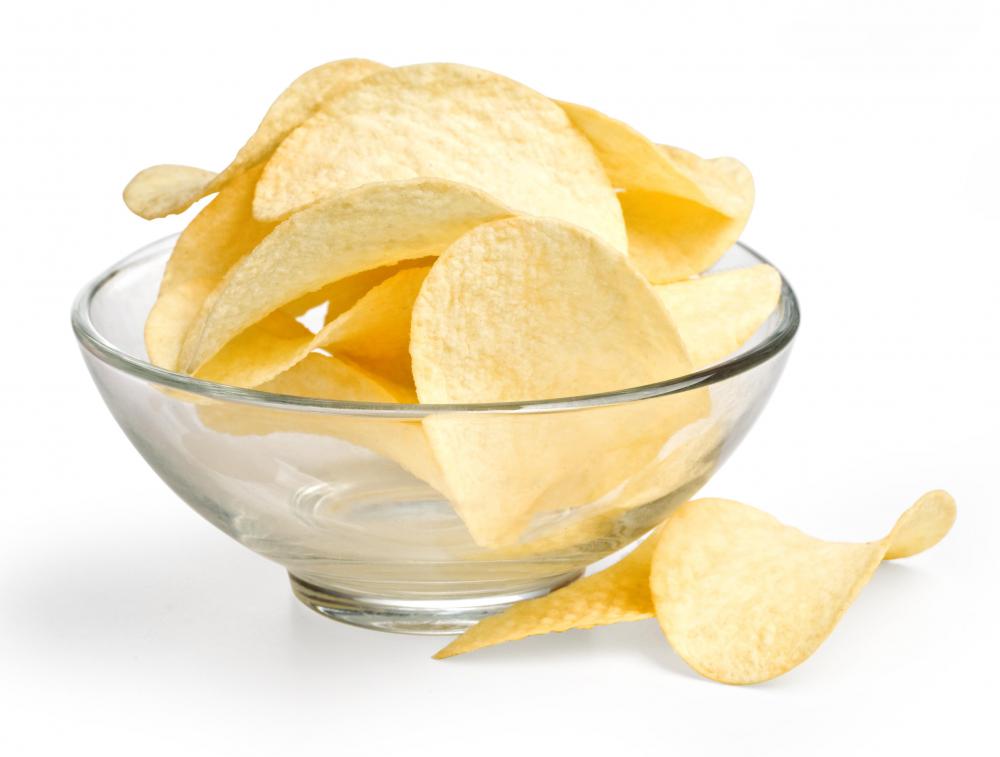At DelightedCooking, we're committed to delivering accurate, trustworthy information. Our expert-authored content is rigorously fact-checked and sourced from credible authorities. Discover how we uphold the highest standards in providing you with reliable knowledge.
What is a Russet Potato?
Technically speaking, a russet potato is one of any roughly textured, brown tuber varieties. The word “russet” means “rough,” and a number of different potatoes can be described with this adjective. Nevertheless, the term has taken on a more particular meaning within the United States and Canada. In these markets, products labeled “russet” are almost always russet Burbanks. The russet Burbank is a hybrid potato known for its flavor consistency and long shelf life.
How the Russet Burbank Came to Be

Potatoes of all varieties are widely believed to be indigenous to South America. As early as the 1500s, Spanish and Portuguese explorers brought potato plants to Europe, where they were cultivated and ultimately brought back across the Atlantic to be grown as crops in settlements in New England and Southern Canada. Some of the transplanted varieties thrived in the so-called “New World,” but others were harder to grow. Harsh winters and dry ground made cultivation difficult.

At first, settlers and colonists used potatoes exclusively for animal feed. The unpredictable shape and somewhat bland taste made them generally disliked by most farmers. All of this changed when Massachusetts horticulturist Luther Burbank created the hybrid today recognized as the standard russet potato.
Burbank began crossbreeding potato plants in the mid-1800s, convinced that he could make this crop both easy to grow and palatable. The russet Burbank hit both of these goals, and also proved to be very disease resistant.
Growth in Idaho

Pioneers who traveled West across the United States brought seedlings of Burbank’s plants with them, and Burbank himself eventually settled in California. The russet potato grew exceedingly well in the damper, more moderate Western soil, and ultimately became the primary agricultural crop of the Northwestern state of Idaho.
Idaho farms grow the vast majority of all potatoes used in the United States, and exports are also a big business. The term “Idaho potato” has become a common synonym for the russet Burbank in most markets around the world.
Distinguishing Characteristics

The russet potato can be easily identified by its large size and rough, patchy brown skin. Most russets measure between 5 and 8 inches (about 13 to 20 cm) long, and are usually about 3 inches (roughly 8 cm) wide. The flesh is white in color, and very firm.
Culinary Uses
Most of the French fries made in North America and Europe are produced from russet potatoes. The potatoes’ fairly uniform size and even texture make them ideal for chopping and frying, producing batches that taste virtually identical no matter how many different crops were used.
Russet potatoes are commonly boiled in soups or stews, or boiled and mashed. When diced and fried, they are often referred to as “home fries”; roasting, either in slices or chunks, is also common.

A russet potato may also be baked whole, then served with various condiments — butter, sour cream, and cheese are common, but inventive chefs serve so-called “baked potatoes” or “jacket potatoes” with everything from beans and stewed vegetables to curries. The tuber’s neutral flavor pairs well with a variety of tastes and textures.
Potato chips or crisps are one of the only foods for which russets are not particularly well suited. In part this is due to the russet’s high starch content. When thinly sliced and fried, the dense carbohydrates tend to crystallize and darken, which many consumers and manufacturers find unappealing. Standard yellow potatoes or hybrids cultivated specifically for chipping are far more common for this particular application.
Nutritional Value
Russet potatoes are rich in vitamins C and B6, and have one of the highest antioxidant levels of any tuber variety. Antioxidants are powerful substances that help protect the body’s cells from free radicals believed to contribute to cancer, among other ills.
The average russet potato also contains a considerable amount of iron, protein, and fiber. All three of these nutrients occur predominantly in the peel, however. Potatoes that are peeled before cooking or eating often deliver little more than trace minerals. This is not to say that eating only russet flesh is unhealthy — it simply is not as healthy as eating the tuber in full, and many of the key nutrients are lost.
A russet potato’s nutritional value is enhanced through cooking. Although the tubers can be eaten raw, this is rare; uncooked, they are often bland, crunchy, and, to many, all but unpalatable. Cooking in any style has the benefit of softening the flesh, as well as bringing out the full strength of all vitamins and minerals.
Storage and Shelf Life
Typically, russet potatoes have a shelf life of several weeks. They last the longest when stored away from direct sunlight, ideally in a cool place. Refrigeration is not recommended, however. Excess cold can cause the potatoes’ starches to turn into sugars, which alters taste and can lead to quick decay and spoilage. The bottom shelf of a pantry or behind closed cupboard doors is usually the best place for raw russets.
It is usually best to cook russet potatoes within two weeks of purchase. After this point, the potatoes tend to soften, and may begin growing “eyes.” Eyes are little more than sprouts that, if buried in soil, would give rise to new russet potato plants. Potatoes that have sprouted are by no means wasted, though most cooks will remove the eyes with a paring knife or stiff brush before cooking. Eyes are not toxic or harmful, but are usually somewhat off-putting.
AS FEATURED ON:
AS FEATURED ON:















Discussion Comments
A potato has no cholesterol. only animal-based foods have cholesterol.
@Walrus Tusk - Sounds really simple and easy to make! I like homemade fried myself, but we always season them differently. Some nights it's just salt and pepper, other nights it is a zesty mix of spices, and still for other nights we do an Italian mix like Parmesan cheese and garlic salt. Very tasty! Then we put them in a paper cone and have movie night with different dips.
@wecallherana - I love pan fried potatoes the best and we always use russets for that. They are kind of between tater tots and hash browns in our home. They are best cooked in a cast iron skillet with vegetable oil.
It isn't the healthiest option, but they crisp up better this way than if you were to batter and then fry them - also a lot healthier to leave them "naked" rather than batter them. Aside from that, after they come out of the pan I like to use a little salt, pepper, and season salt.
@leiliahrune - I have seen those -huge- potatoes at a local Barbecue restaurant before and they are delicious! We often have a home barbecue night, but our potatoes are not nearly as big. Aside from that, yes there are lots of ways to make potatoes - anyone have any good recipes or cooking tips? I'm looking for new options.
@anon21527 - I guess you haven't seen that's Lays commercial lately! It's about how people all over the United States are saying their state grows the best potatoes; it's a cute commercial. Aside from that, there are literally thousands of ways to prepare a potato. Russet potatoes are best for baking, especially when you can find the large baker potatoes. Many food chains (mostly Barbecue) specialize in having exceptionally large potatoes to stuff with all kinds of goodies.
One of the best Russet Potatoes are ones grown in Idaho.
Post your comments